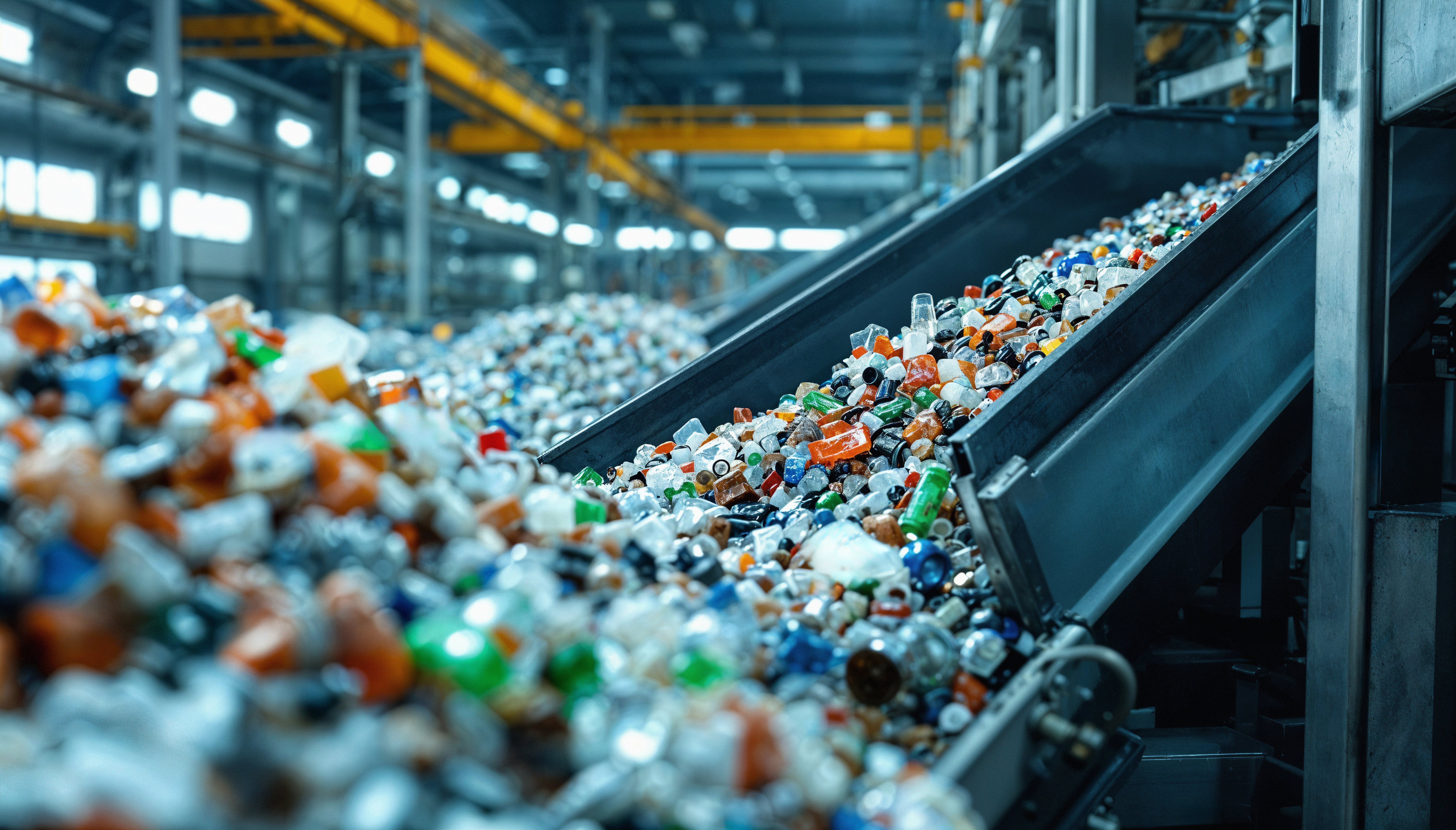Understanding Manufacturing Waste and Why It Matters

Strong 8k brings an ultra-HD IPTV experience to your living room and your pocket.
Manufacturing waste is a pressing concern for modern industries. As businesses strive to improve efficiency, profitability, and sustainability, tackling this issue has become a priority. But before diving into solutions, we must understand what manufacturing waste is and why reducing it is critical.
Manufacturing waste refers to any material discarded during the production process that does not add value to the final product. Common types include defective parts, offcuts, scrap materials, packaging surplus, and chemical by-products. While some waste is inevitable, excessive waste leads to significant consequences.
The impacts of manufacturing waste include:
- Rising raw material costs due to inefficient use
- Higher waste disposal fees and logistics management
- Increased environmental pollution, contributing to air, water, and soil degradation
- Reputational damage, as customers now expect brands to take sustainability seriously
In essence, waste isn’t just a by-product of production it’s a signal of inefficiency. Effective waste reduction strategies not only improve the bottom line but also enhance brand reputation and reduce environmental harm.
Production Waste Reduction: Key Approaches for Modern Manufacturers
Reducing waste doesn’t require dramatic overhauls. Small, strategic changes to processes and products can make a significant impact. From rethinking design to adopting better materials, here are some proven ways to minimize waste in manufacturing:
1. Redesign Products for Sustainability
When businesses seek to improve sustainability, they often overlook a foundational factor: the product itself. Rethinking product design can drastically cut waste before production even begins. Consider:
- Simplifying product components to minimize material use
- Choosing recyclable, compostable, or biodegradable materials
- Designing for modularity, allowing products to be repaired, reused, or upgraded easily
A notable example is a beauty brand that reimagined their product packaging. They transitioned from complex multi-layer plastic to simple cardboard packaging significantly reducing packaging waste and simultaneously appealing to eco-conscious consumers.
This type of redesign doesn’t just serve sustainability it can drive customer loyalty and open doors to new markets.
2. Optimize Manufacturing Processes
Another critical area for production waste reduction lies in how products are made. Lean manufacturing techniques, originally pioneered by Toyota, are now widely adopted to reduce inefficiencies and streamline operations.
Some practical examples include:
- Material layout optimization: Improve cutting and shaping processes to reduce offcuts and scrap
- Just-in-time production: Minimize overproduction and excess inventory
- Automation and AI: Detect defects early and improve quality control with machine learning systems
Several clients I've worked with achieved up to 25% scrap reduction simply by optimizing their workflows and training employees more effectively. In fact, better use of resources often results in faster production times and higher output quality.
3. Adopt Innovative Materials and Packaging
One of the biggest contributors to manufacturing waste is excessive or unsustainable packaging. Rethinking packaging solutions is a direct response to the challenge of how to reduce packaging waste. It’s also where many businesses are finding a competitive advantage.
For instance, switching to kraft box packaging can drastically improve packaging sustainability. Kraft boxes are manufactured using recycled paper, making them biodegradable, recyclable, and easy to customize. These boxes:
- Require less energy to produce
- Offer sturdy protection for products
- Align with growing consumer expectations for eco-friendly packaging
Whether you're in food, cosmetics, or electronics, kraft packaging offers a practical way to reduce waste while delivering a clean, natural brand image.
Industrial Pollution Solutions That Also Reduce Waste
Addressing production waste also tackles a deeper environmental issue: industrial pollution. Many pollutants stem directly from wasteful practices. That’s why combining waste reduction with pollution control is a smart, integrated strategy.
Effective industrial pollution solutions include:
- Water recycling and treatment systems to prevent contaminated discharge
- Closed-loop systems that reuse solvents and materials
- Air filtration technology to reduce harmful emissions
Implementing these systems ensures environmental compliance and positions companies as leaders in corporate responsibility. Long term, these investments pay off by reducing operational risks and improving community relations.
Modern Manufacturing Waste Management
Historically, managing waste meant disposing of it landfills, incineration, and transport. Today, however, the emphasis has shifted to elimination at the source and circular systems where waste becomes a resource.
Here are some innovative ways to minimize waste that manufacturers are using today:
- Supplier take-back programs: Collaborating with suppliers to return unused raw materials or packaging for reuse
- On-site recycling: Processing waste materials like plastic, metal, or cardboard directly back into the manufacturing cycle
- Upcycling: Turning waste or by-products into entirely new products or revenue streams
These practices reduce dependency on virgin materials, lower carbon footprints, and generate secondary income streams. This is not just good for the environment it’s a competitive business model.
How to Reduce Industrial Waste at the Source
One of the most effective strategies for improving manufacturing efficiency is tackling waste at the origin. The philosophy of waste minimisation prioritizes preventing waste creation rather than managing it after it occurs.
Key elements of this approach include:
- Designing systems to prevent defects and errors
- Using predictive analytics to monitor and forecast waste patterns
- Engaging teams with sustainability training and accountability
When businesses ask how to reduce industrial waste, the most scalable answer is often a cultural shift. By aligning every team from design to shipping under a shared goal of waste reduction, companies build long-lasting, future-ready operations.
Success Stories: Real-World Waste Reduction Examples
One packaging company I worked with faced a growing problem with scrap waste from die-cutting machines. By upgrading tooling and providing hands-on training for machine operators, they saw a 30% reduction in waste within six months.
They also shifted to eco-friendly packaging designs that opened up new B2B partnerships with brands focused on green values. In doing so, they not only cut costs but entered higher-value markets.
Another example: a beverage brand seeking industrial pollution solutions installed an on-site wastewater recycling system. This not only reduced their water bills but ensured regulatory compliance and improved their sustainability ratings a factor that won them several international contracts.
Why Production Waste Reduction Is a Business Imperative
Reducing production waste is no longer just an environmental issue it's a business strategy. As regulations tighten, and customer expectations shift, companies must adapt or risk falling behind.
Here’s what successful manufacturers do:
- Continuously evaluate and redesign their products
- Invest in technology and employee training
- Implement waste tracking systems
- Collaborate with suppliers for sustainability
Such companies don’t just meet regulatory standards they build trust with their audience and achieve cost savings that compound over time.
Final Thoughts: Small Changes Create Big Results
The future of manufacturing is sustainable. From the materials we use to the processes we follow, everything must evolve to reduce waste and protect the planet. Changing the product from design to packaging is a cornerstone of any meaningful waste reduction strategy.
Using innovative solutions like kraft paper packaging, applying lean production methods, and adopting industrial pollution solutions aren’t just smart they’re necessary.
By understanding the scope of manufacturing waste and embracing these solutions, businesses can not only become leaders in sustainability but also unlock new opportunities for growth, efficiency, and brand loyalty.
Note: IndiBlogHub features both user-submitted and editorial content. We do not verify third-party contributions. Read our Disclaimer and Privacy Policyfor details.


